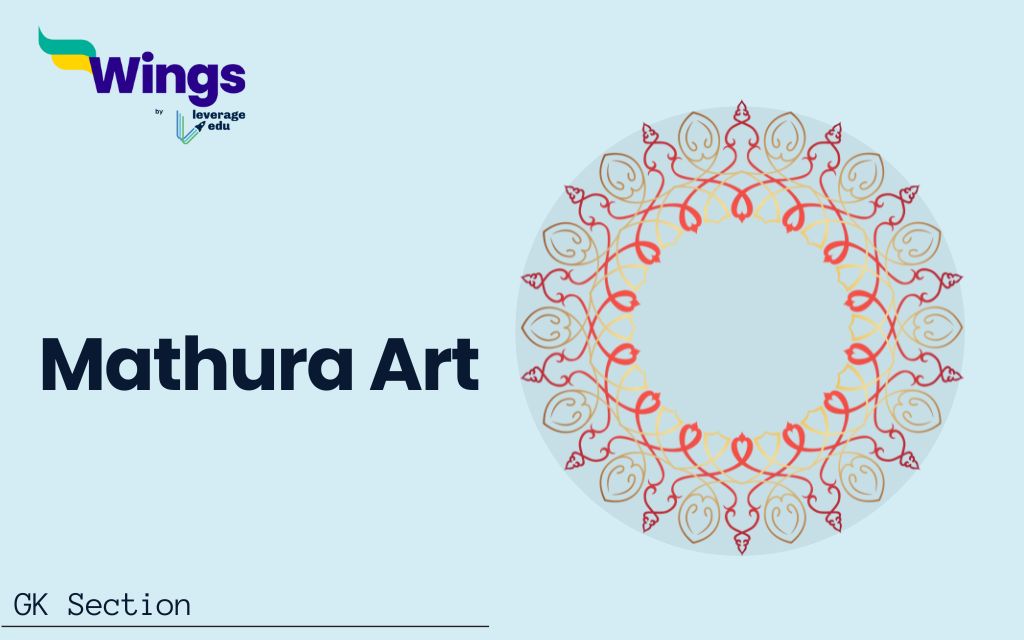Mathura is a city in the state of Uttar Pradesh. The city is thought to have been founded by the demon Madhu. The history of human occupation in this area is broad. Many artisans and craftsmen used to produce their art, which came to be known as ‘Mathura Art’. The artistic movement of that time, also known by the names Madhura, Madhupuri, Madhuban, and Mathula, originated in and around the town of Mathura. Lord Krishna was also born in this city, which has long been a hub for literature, art, and religion. The Buddha also visited Mathura on religious trips to Mathura, which made it a centre of Buddhism. Let us now look at the article below to understand Mathura art, as it is an important aspect when talking about the UPSC – Art and Culture portion.
Contents
What is Mathura Art?

The term “Mathura Art” refers to an art form which flourished during the 2nd century BCE. During that period, Mathura emerged as a significant hub for pilgrimage and trade. However, the Kushan and Gupta period has the greatest contribution to art and culture, which introduced us to the ‘Mathura Art’ or ‘Mathura School of Art’. The Government Museum, Mathura, also known as the Rashtriya Sangrahalaya, takes great care to preserve those ancient and Mathura artefacts.
- During the Kushana period, this art form thrived under the emperor Kanishka. Kanishka was a well-known Indian king who ruled from 127 to 150 AD.
- The Gupta Era, which lasted from the 6th to the 7th century, is when Mathura art peaked and reached its highest point.
- It’s noteworthy that the Mathura art flourished the most in India at the same time when Buddhism, Jainism, and Hinduism were emerging. Jain, Buddhist, and Hindu sculptures were created by Mathura artists.
- This art evolved locally without the influence of outsiders. Locally refers to the art’s development in its original location without outside interference. For instance, the Greek influence can be observed in Gandhara art.
- Mathura art gained importance from the 2nd century BC onwards, and it was spread throughout India.
- The custom of sculpting gods with additional arms or faces to highlight their divinity originated in Mathura. This custom began in the 4th century AD.
Also Read: Gandhara and Mathura School of Art
Examples of Mathura Art
Mathura art has some amazing, unique art forms, that are known worldwide. A few of the famous examples of the same are given below:
- Agnipani Yaksha (fire holder).
- Mehrauli Yakshi, which can be found in the India National Museum, New Delhi.
- Medallion with elephant and riders, Gayatri Tila, Mathura.
- Maharaja Rajadhiraja Devaputra Kaniska.
- Seated Buddha.
- Surya Dev in Indo-Scythian dress.
- Bodhisattva with jewellery.
- Nagaraj of Gupta Period.
- Vishnu Vishvaroop.
- Vishnu of the Gupta Period
Influence of Mathura Art
Particularly in the northern regions, Mathura art influenced the Indian art development. This art form has been widely seen in the later Indian artistic tradition
- Spread of Artistic Techniques: Including Gandhara and Ajanta, the style and techniques of Mathura art spread throughout India. This helped India develop in terms of art, particularly when talking about religious themes.
- Religious Art: Hinduism and Buddhism adopted the iconographic rules of Mathura art as a basis for representing their gods. The Indian subcontinent was influenced by the artistic standards created in Mathura.
- Cultural Legacy: The Mathura art added to India’s wider cultural legacy by influencing literature, architecture, and religious customs. The blending of styles and creative forms developed a rich cultural legacy.
Also Read: Art and Architecture of Gupta Empire | UPSC Notes
Modern Appreciation of Mathura Art
Mathura art focuses on the customs of ancient India and has gained appreciation worldwide. This has recently been a research topic for many scholars as well.
- Scholarly Interest: Due to its historical and artistic importance, Mathura art is currently studied by historians and art researchers. Museums and educational institutions engage in studying and showcasing Mathura artefacts, highlighting their importance in understanding the customs of ancient India.
- Study and Preservation: Attempts have been made to keep artefacts of Mathura alive and contribute to its legacy. Throughout the world, museums hold artefacts from Mathura that give insight into the artistic and religious customs of ancient India.
Recent Posts
| Buddhist Art, Architecture and Literature | Art and Architecture of the Gupta Empire |
| Art and Architecture of Gupta Empire | Arts of the Mauryan Period |
FAQs
The term “Mathura Art” refers to an art form which flourished during the 2nd century BCE. This art form was produced by various artisans and craftsmen of the Mathura. The Kushan and Gupta period has the greatest contribution to art and culture, which introduced us to the ‘Mathura Art’ or ‘Mathura School of Art’.
What is the Gandhara and Mathura stone?
The red sandstone from the area was used by the Mathura School of Art. Grey-green stone, known as Gandhara schist, was the primary material used by the Gandhara School of Art.
What kind of material does the Mathura School of Art use?
Mathura created a native style of sculpture that was mostly made of red sandstone.
This was all about the “Mathura Art”. For more such informative blogs, check out our UPSC Exams Section and Study Material Section, or you can learn more about us by visiting our Indian exams page.
 One app for all your study abroad needs
One app for all your study abroad needs














